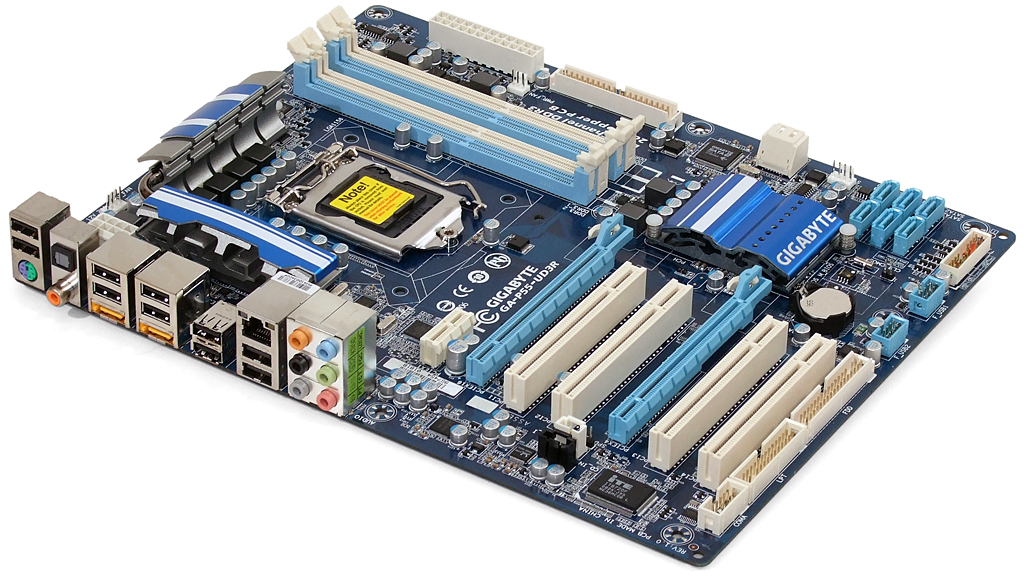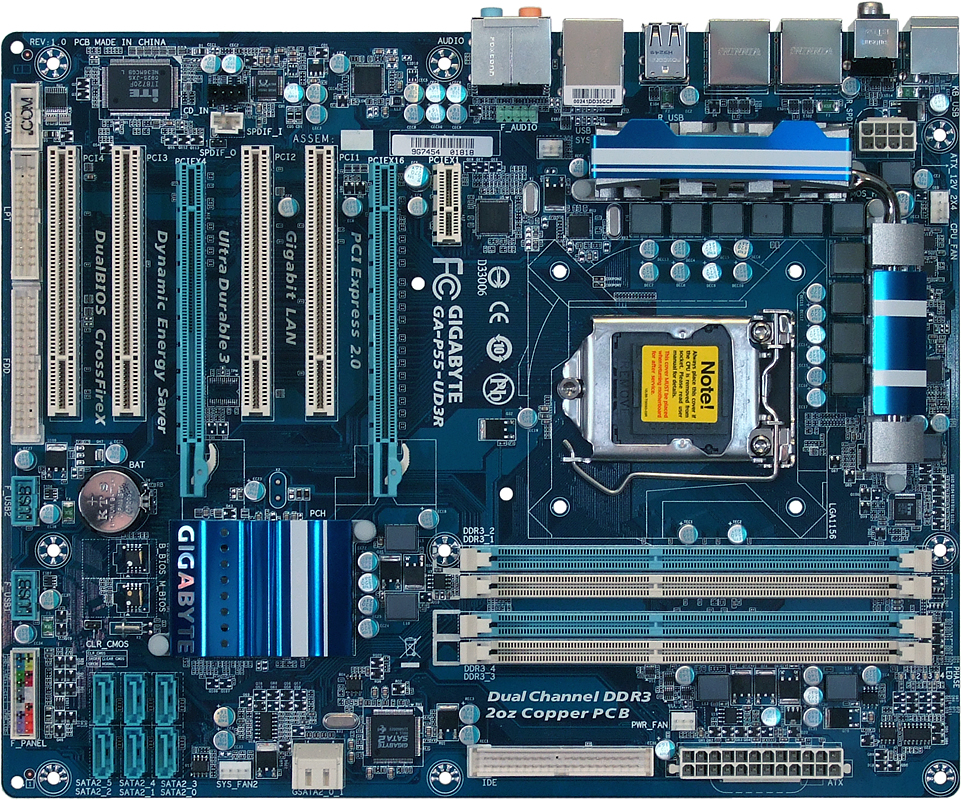P55 On A Budget: Five Core i5/i7 Motherboards For $100-$150
Gigabyte P55-UD3R
For a full-sized motherboard that costs less than $140, the P55-UD3R is amazingly crowded with features. However, there are no buttons and status panels, or even the rarely-used (but often expected) FireWire interface.
Instead, Gigabyte decided to focus on the “free stuff.” That is, functions already included in a multi-I/O that most manufacturers have long made inaccessible. The bottom edge hosts a floppy interface, communications port, and even the long-forgotten parallel port. Those who really despise legacy interfaces must be reminded that their favorite "legacy-free" product likely has these same features hidden from view inside the I/O controller.
Filling the board half-way with freebies allowed Gigabyte to put the money saved towards more useful items, such as a 10-phase voltage regulator and an eSATA controller, separate from the internal ATA/SATA combo controller. Anyone who needs features not included will be happy to find seven expansion slots employed, though as is the case with the Asus board, the second x16 slot is limited by its four PCIe 2.0 pathways through the P55 Express PCH.
Gigabyte makes reaching its front-panel audio and Ultra ATA interfaces handy by placing both above the P55-UD3R’s center line, but Windows XP RAID installers might be frustrated that the floppy connection has been shoved under the bottom PCI slot. Another potential problem is that the chipset’s integrated SATA ports all face outward beneath the second x16-length slot and all six are easily blocked by long double-slot graphics cards. Having noticed the potential problem, we remind readers that the second x16 slot's x4 pathways make it unsuitable for high-performance graphics applications, though it is suitable for hosting a less-elaborate graphics card and other medium-bandwidth needs.
BIOS
We installed the latest public BIOS available by September 12 on each motherboard, including Gigabyte’s P55-UD3R version F3e. After testing was complete, we confirmed that two bugs that negatively affected installation and hardware detection were later solved in version F3h.
Gigabyte’s new M.I.T. menu offers basic system information, with all user-configurable settings moved to appropriate submenus.
Get Tom's Hardware's best news and in-depth reviews, straight to your inbox.
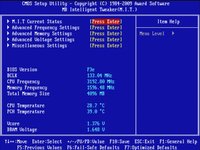
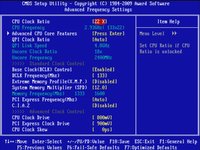
The Advanced Frequency Settings submenu has controls for a CPU multiplier and base clock, QPI ratio, memory ratio, PCIe frequency, drive strength, and clock skew. Due to a discrepancy at its “automatic” setting, we set the base clock manually to 133 MHz for our benchmarks.

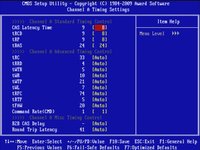
The Advanced Memory Settings submenu allows DRAM timings to be adjusted automatically, per channel, or for all channels. Choosing the “quick” mode allows timings for both channels to be set from either Channel A or Channel B submenus, where “automatic” mode for less-understood values eases manual configuration.
Gigabyte’s P55-UD3R includes a relatively broad set of voltage controls to satisfy moderately-advanced overclockers. Our only complaint was that memory voltage jumps directly from 1.64 to 1.66 V, skipping the 1.65 V setting so often recommended by memory manufacturers.

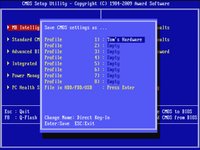
Up to eight BIOS Profiles can be stored on the BIOS IC, while more can be transferred to a hard drive, floppy, or flash drive.
Accessories
Like most motherboards in the $100-$150 range, the P55-UD3R includes four SATA cables and an 80-conductor IDE ribbon. Anyone who wants to access the motherboard’s plethora of legacy features will need to buy cables and adapters separately.
